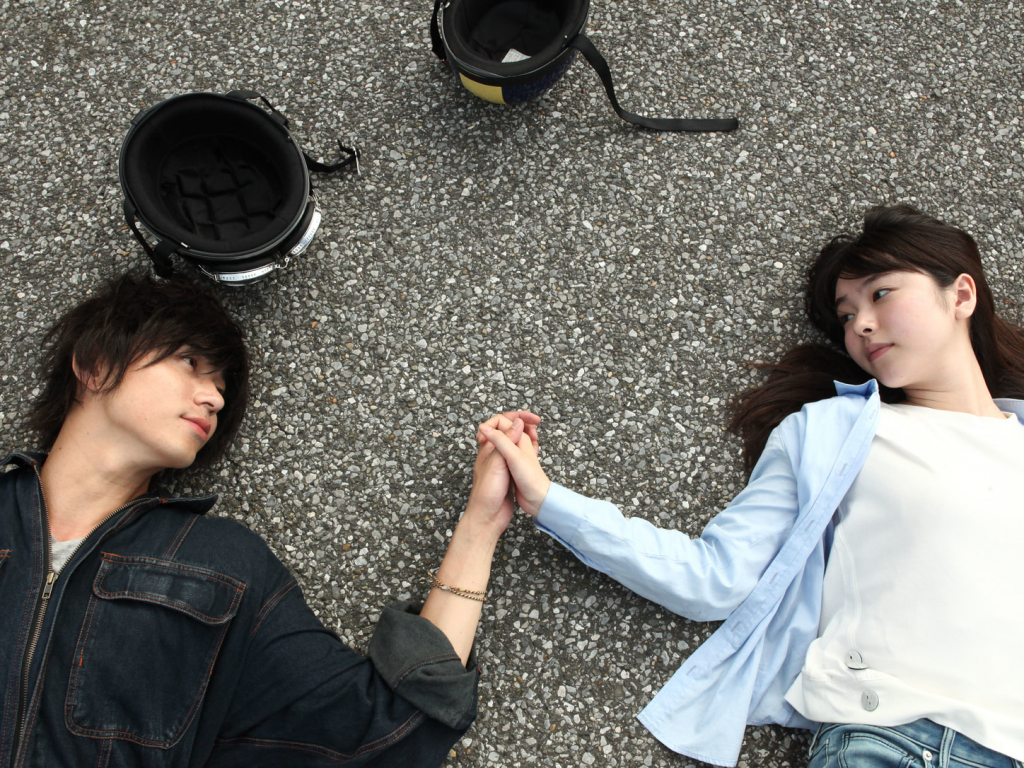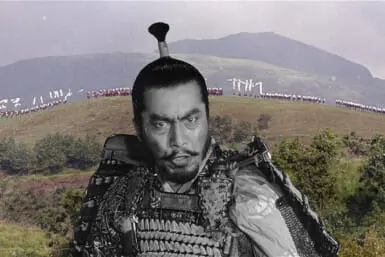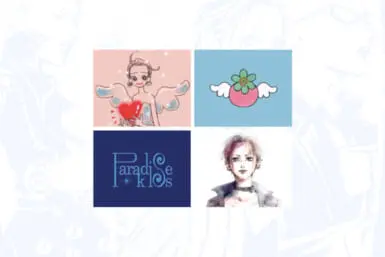One of the most innovative young filmmakers in Japanese cinema, Ryusuke Hamaguchi is finally starting to get the recognition he deserves. The 39-year-old’s latest movie, Asako I & II, released at the beginning of September, was this year selected to compete for the Palme d’Or at the 71st annual Cannes Film Festival.
In the end, the top prize went to compatriot Hirokazu Koreeda for his critically acclaimed family drama Shoplifters, however, for Hamaguchi, just to be nominated alongside the likes of Koreeda, Spike Lee and Jean-Luc Godard will no doubt prove to be a major boost for his career.
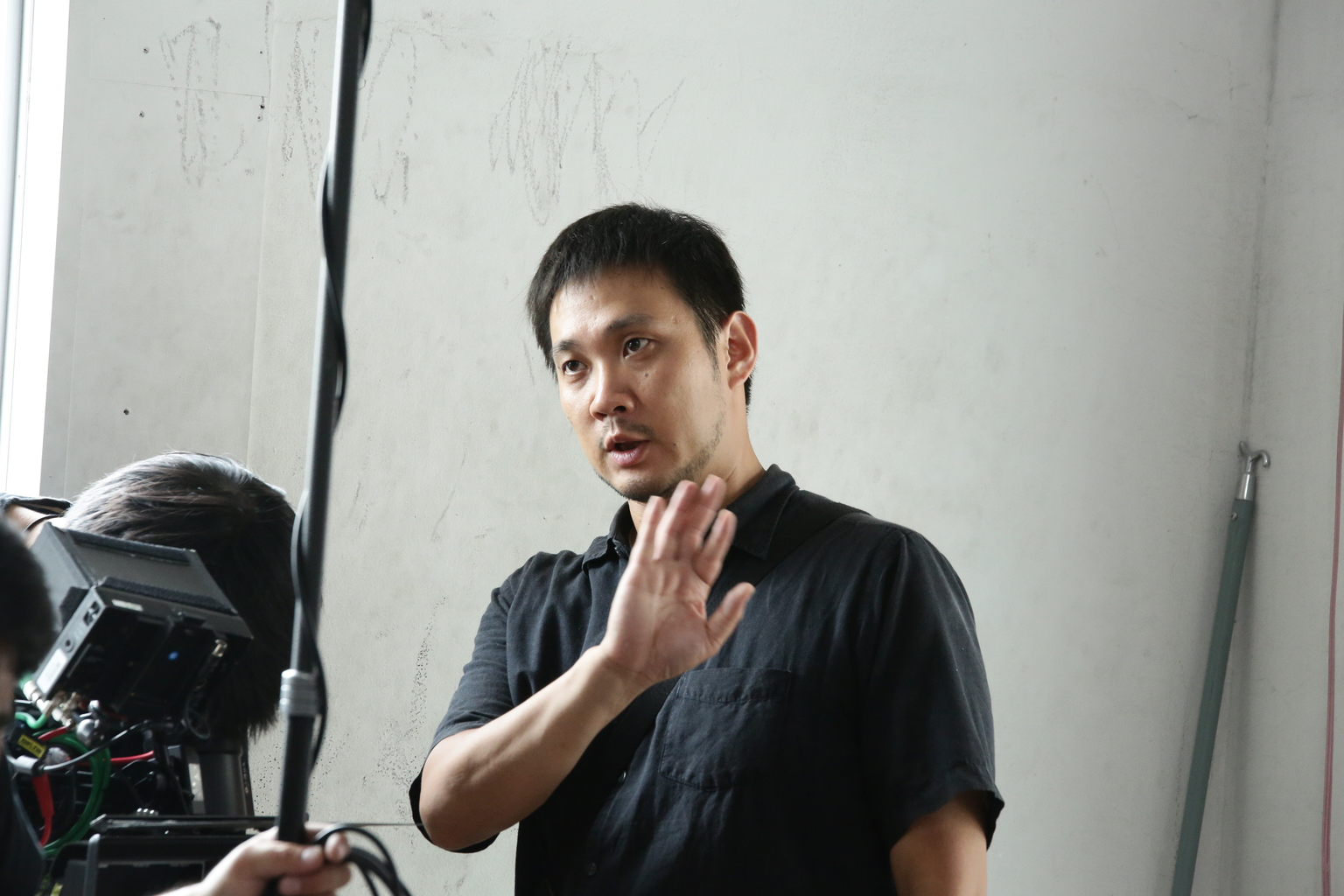
Ryusuke Hamaguchi on set
“It came as a complete shock,” Hamaguchi tells TW. “I thought there might be a chance of being nominated in one of the other categories but didn’t imagine that it would be selected for the main competition. My producer called at around 1am to give me the news which was exciting even though I was half asleep. I don’t make films to chase awards, but I’d be lying if I said it wasn’t a pleasant surprise.”
Hamaguchi had been to the Cannes Film Festival before as a guest in 2014 but this was his first time to feature in the competition. The experience, he says, was completely different the second time around.
“Walking the red carpet and doing all the interviews was great but it was hard to take everything in,” recalls the director. “I felt very nervous at the screening. I watch all my films several times over during the editing process and I’m never sure how people are going to react.”
Viewing it alongside an audience, he says, can then be quite stressful, especially at a renowned festival like Cannes where feedback can be notoriously harsh. “The movie showed at an auditorium full with 2,000 people and that’s not something I’m used to,” continues Hamaguchi. “You try to gauge the general feeling and wonder why they don’t laugh at certain parts and things like that. In the end, we got a standing ovation which made all the stress worthwhile.”
An imaginative and at times mysterious romantic comedy, Asako I & II begins with a chance encounter at a photography exhibition in Osaka between the title character Asako (Erika Karata) and a handsome free spirit named Baku (Masahiro Higashide). They immediately fall head over heels for each other and Asako is besotted with her new flame despite best friend Haruyo (Saira Ito) warning her there will be trouble ahead.
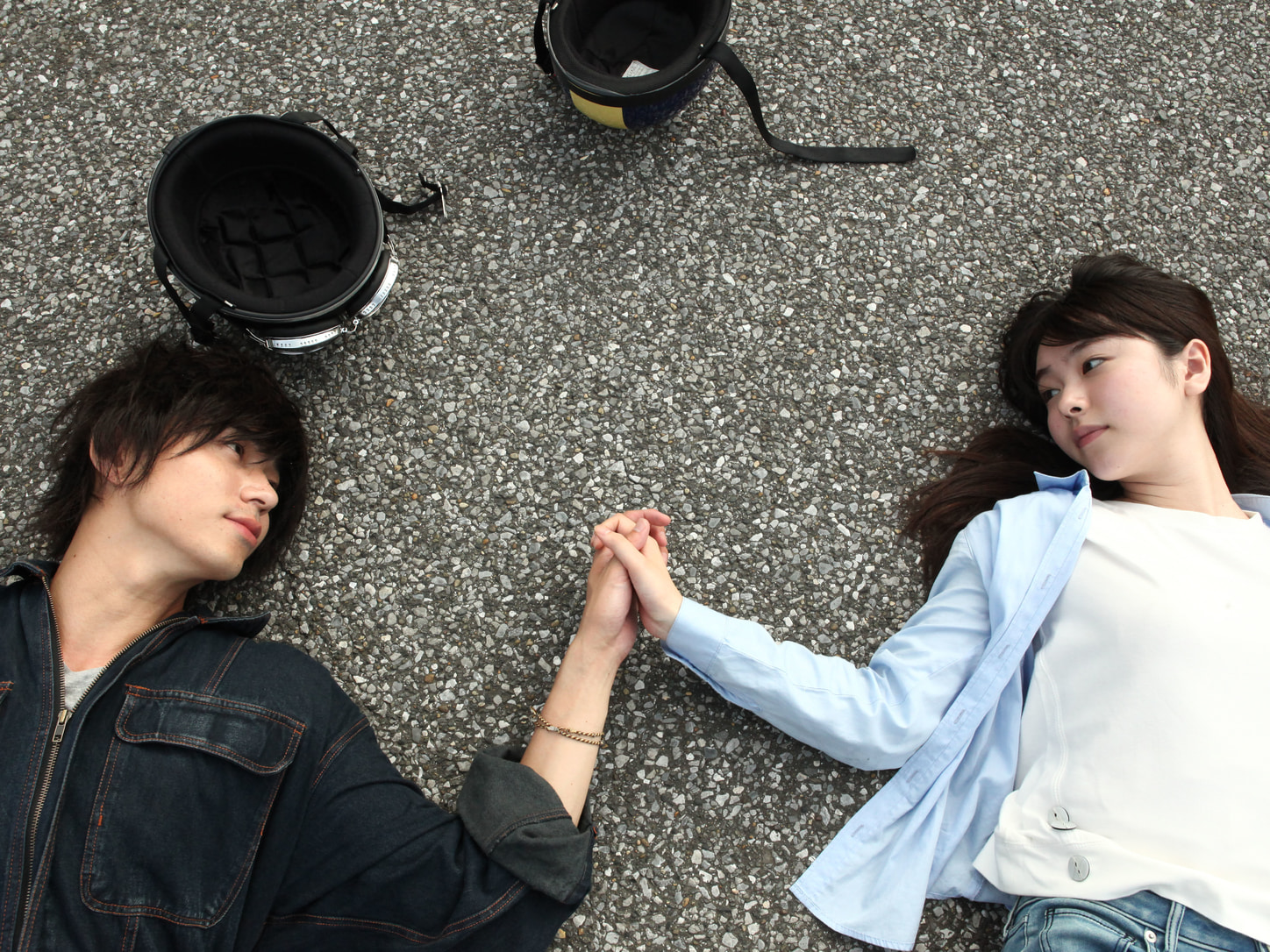
Masahiro Higashide and Erika Karata in Asako I & II
Haruyo is proved right as Baku suddenly disappears without any explanation, leaving Asako devastated. Two years later, the demure leading lady is living in Tokyo and happens to come across a doppelganger for Baku in the form of kind, straight-laced businessman Ryohei Maruto (also played by Higashide). His looks are enough to entice Asako, and the pair become an item. After five years, things seem to be going well, with talk of marriage, then Baku, who has become a model and actor in the meantime, returns and upsets the apple cart.
The story is based on Tomoka Shibasaki’s book Nete mo Samete mo (which is also the title of the film in Japanese). The highly respected author, who won the 151st Akutagawa Prize for her novel Haru no Niwa (Spring Garden), is an acquaintance of Hamaguchi and that made the process of adapting the story much smoother.
“I’ve read a few of Shibasaki’s novels and in terms of making a movie, I felt [Nete mo Samete mo] had the most potential,” says the director. “It’s written in the first person and is very descriptive. From a visual perspective, I was immediately intrigued and wanted to stay as loyal to the book as possible.”
One thing he did change was the timeframe. Shibasaki’s tale takes place between 1999 and 2008, whereas Hamaguchi decided to bring things forward around 10 years to include the 2011 Great East Japan Earthquake and Tsunami in the story. “It was a seminal moment in this country’s history and I think it worked well with the general narrative of the film,” says Hamaguchi, who has directed two documentaries about the disaster. “Shibasaki was fine with the change and didn’t question the script at all. I was free to do as I wished. The only thing she insisted on from the beginning was realistic Osaka accents, and in that sense I think the cast did very well.”
Higashide has this mysterious and edgy side yet is also quite gentle, which I thought would work very well for this movie
Masahiro Higashide, who speaks with a Tokyo accent for the part of Baku and an Osaka one as Ryohei, was always Hamaguchi’s first choice for the two lead male parts. The 30-year-old actor and model has been in demand since his breakthrough performance as Hiroki Kikuchi in Daihachi Yoshida’s coming of age film, The Kirishima Thing, which won him best newcomer accolades at the Asian Film Awards and the Japan Academy Awards. “I’d been interested in working with him since then,” says Hamaguchi. “He has this mysterious and edgy side yet is also quite gentle, which I thought would work very well for this movie. His performance in Kiyoshi Kurosawa’s Creepy, one of my favorite films, reaffirmed that view.”
Leading lady Erika Karata, 19, who was first scouted at a farm near her hometown in Chiba, is not as well-known as Higashide though is seen as an up-and-coming star in Japan and has a large following in Korea. According to Hamaguchi, she didn’t come across as especially “enthusiastic” in the audition but ironically this – and her voice – was what made her stand out.

Hamaguchi is hoping the leading actors’ popularity will help to boost sales, which is something he couldn’t rely on with his previous film, Happy Hour. It featured four non-professional actresses in the main roles, all of whom were discovered at an improvisational workshop. The 317-minute-long epic chronicles the lives of these thirtysomething bourgeois women who start to reevaluate their goals and desires after one of them reveals she is seeking a divorce.
Despite having never worked on a feature-length movie before and only being able to film on weekends as they had full-time jobs during the week, the four women shared the Best Actress prize at the prestigious Locarno film festival. Each of the characters has an intriguing and at times emotional story to tell. While slow burning, the critically acclaimed film doesn’t drag, which is remarkable given the fact it’s over five hours long.
“Even as the director I felt it was quite difficult to sit down and watch a movie of that length so I was surprised by the reaction to it,” says Hamaguchi. “With an independent film like Happy Hour you have more freedom to try things out and you can develop the story as it goes on. You could say there is less pressure. It was enjoyable to make and the cast did a great job.”
Looking ahead, Hamaguchi is not sure what his next project will be, though admits it’s unlikely to be as long as Happy Hour. “I think 90 minutes is much easier for audiences to handle,” says the director with a laugh. “I don’t really look too far ahead with an aim to make this or that kind of movie. It’s more of a natural process. My goal is simply to make films that people can enjoy. I hope that’s the case with Asako I & II.”
Watch the trailer below. More info about Asako I & II at mk2films.com/en/film/asako-i-ii/
https://www.youtube.com/watch?v=WlCYAhIhLBk
HAMAGUCHI’S RECOMMENDED DIRECTORS
Mikio Naruse: The least well-known of Japan’s big four filmmakers (the others being Akira Kurosawa, Yasujiro Ozu and Kenji Mizoguchi), Naruse directed nearly 90 movies, many of which had a bleak and pessimistic outlook with female protagonists.
John Cassavetes: Known as the “Godfather of American Independent Film,” Cassavetes pioneered the use of improvisation and a cinéma vérité style. He also appeared as an actor in many notable films including Rosemary’s Baby and The Dirty Dozen.
Kiyoshi Kurosawa: Hamaguchi’s professor at Tokyo University of Arts, Kurosawa made a name for himself during the J-horror renaissance that began in the mid-to-late 90s. He garnered a cult following around the globe with films like Cure, Charisma and Pulse.

